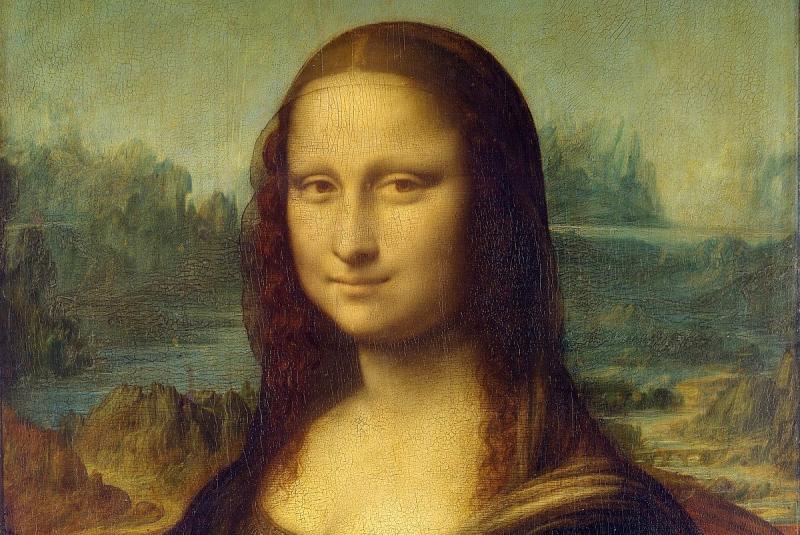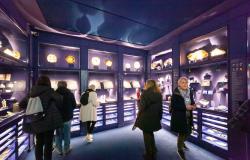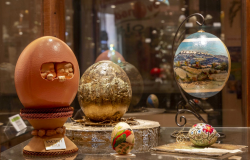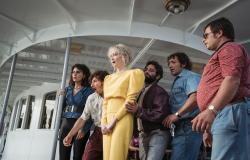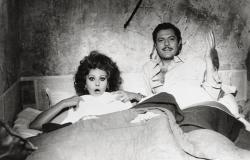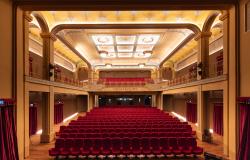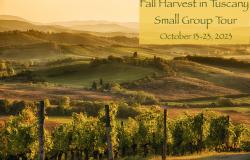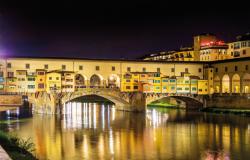Nearly everyone on the globe recognizes the woman in Leonardo da Vinci’s Mona Lisa, whether or not they have seen the iconic portrait in person in the Louvre. But many viewers don’t realize that the portrait probably represents a real woman who was born on June 15, 1479 in Florence. So, just who is Mona Lisa and what is her connection to the Tuscan city?
The traditional interpretation is that Leonardo’s famous portrait represents the likeness of Lisa Gherardini, the wife of a prosperous Florentine cloth merchant who commissioned Leonardo da Vinci to paint her, probably in 1503. But after half a millennium and generations of scholarship, sometimes I think we have more questions than answers about the lady and her portrait. In fact, the scholarship on this portrait is immense and daunting for any art historian. And scholarly work on Leonardo da Vinci is very much alive and developing.
But amid the questions and many conspiracy theories about the portrait of Mona Lisa, we can experience tangible Florentine locales where the historical Lisa Gherardini lived and breathed. Walking in the footsteps of this famous lady not only brings this interesting historical character to life, but this off-the-beaten-path tour helps us see this familiar city with fresh eyes.
Baptistery of San Giovanni

So, what do we know about Lisa? First, we know she was a real person born in Florence in 1479 to the Gherardini family. Lisa’s baptismal record survives today in the cathedral archives.
In the 15th century, Florentine families brought their newborns to be baptized under the glistening, mosaic-encrusted dome of the Baptistery of San Giovanni. Interestingly, Lisa’s father Antonmaria recorded that his baby daughter had no dowry.
Via Sguazza
Lisa grew up in the Oltrarno district, where her family rented a series of rundown houses, including one on the still-gloomy Via Sguazza. By the time of Lisa’s birth, her father owned a few tenant farms in the Chianti region. Unfortunately, these were burned and ransacked during the French invasions that plagued the Italian peninsula over the course of the late 15th century. Even though Lisa’s father had a noble pedigree, he was not wealthy.
But not far away, along the Arno river, there were all kinds of businesses supporting the textile trade. There were people who specialized in cultivating silkworms, in throwing and spinning the threads. There were dyers, weavers, and merchants whose networks spread across the known world. This thriving textile trade would soon turn Lisa’s fortune.
Today, a relief sculpture near the corner of Via Sguazza and Via Maggio bears witness to Lisa’s history on this street.
Via della Stufa
Although we don’t know the circumstances of Lisa’s engagement, she married Francesco del Giocondo, a prosperous cloth merchant nearly twice her age, in 1495. The couple moved across the Arno to a fine house, which still stands in a much-altered state, at 23 via della Stufa.
It seems that Francesco had already lost one, perhaps two, wives in childbirth. At the time he married Lisa, Francesco had a two-year-old son in the house. Right away, Lisa began having children. Lisa gave birth to six living infants, but three or four of the children predeceased her. Some scholars have suggested that at a time when birth and death were often intertwined, this portrait may have celebrated Lisa after she gave birth to two surviving sons.
In her more elevated social position as a cloth merchant’s wife, Lisa would have been expected to raise children, strengthen her social connections and family bonds with other upstanding families of Florence, and do charitable works.
It so happens that Leonardo da Vinci’s father, the busy notary Ser Piero da Vinci, lived just a stone’s throw away from Francesco and Lisa. And in fact, Francesco del Giocondo was one of Ser Piero’s clients.
Santissima Annunziata

In 1500, Leonardo da Vinci, aged 51, returned to Florence after spending nearly fifteen years away at the court of Milan. Upon his return, he didn’t have any commissions. At that time, the great cathedral was partially complete. Michelangelo Buonarotti was busy working on his David in the cathedral work yard.
Leonardo’s father was involved in the monks’ business dealings and may have helped arrange for living quarters—and a commission for an altarpiece—for his son inside the monastery. Lisa’s husband Francesco supplied altar cloth and vestments to the monks.
Perhaps Leonardo’s father talked his son into doing a portrait or perhaps convinced Francesco del Giocondo to have his wife painted. We don’t know the specifics, but we can’t help but wonder if, amongst these intertwined connections at Santissima Annunziata, Leonardo and Lisa’s fate was sealed.
Pharmacy at Santa Maria Novella

At the turn of the 16th century, Florence boasted a variety of pharmacies, mostly run by monasteries and convents across the city. A historical ledger from Sant’Orsola states that Lisa purchased a vial of distilled snail water, which was commonly used for skincare and to aid digestion.
Today, the surviving medieval pharmacy, the Officina Profumo Farmaceutica di Santa Maria Novella, lets us experience what stepping into such a cabinet of curiosities must have felt like for Lisa and other women shopping in Florence at the time.
Convent of Sant’Orsola
Lisa spent her widowed years at Sant’Orsola, a convent near her home where her daughter was a cloistered nun. According to historical documents, Lisa was buried at Sant’Orsola, while her husband and sons were interred in the family tomb at Santissima Annunziata.
In recent years, a search began for the human remains of Lisa Gherardini herself, with the intention of comparing her face to Leonardo’s famous portrait. Time will tell if this quest yields any insightful results.
Today, Sant’Orsola is a huge, seemingly abandoned structure but there is a new renovation project to revive the building.
Beyond Florence
Even though we know a considerable amount about Lisa, we know little about the circumstances of her portrait’s creation. There is no surviving tax record, dowry or estate inventory, or contract with the artist. In fact, we have no evidence that this portrait was delivered to Francesco or Lisa at all.
Instead, Leonardo da Vinci himself seems to have taken the portrait with him when he left Italy for the last time in 1516, crossing the Alps probably on mule-back, with Lisa’s likeness packed in a crate along with several other pictures in progress.
The French king, François I, gave Leonardo an offer he couldn't refuse and the artist left Italy for good, never to return. Eventually, the portrait ended up in the French royal collection and ultimately in the Louvre.
Lisa’s famous portrait returned to Florence one more time in its long history. At the beginning of the 20th century, an Italian handyman stole the painting from the Louvre and brought it back to Florence, the place where he felt Lisa rightfully belonged. But that incredible chapter in Lisa’s history is a tale for another day.
If you’d like to take a deep dive into Lisa Gherardini’s life, I recommend Dianne Hale’s terrific book, Mona Lisa: A Life Discovered.
